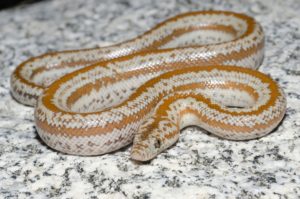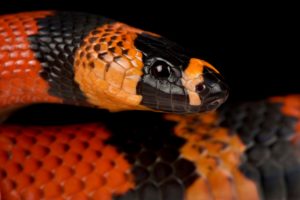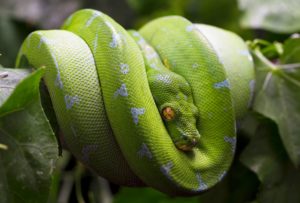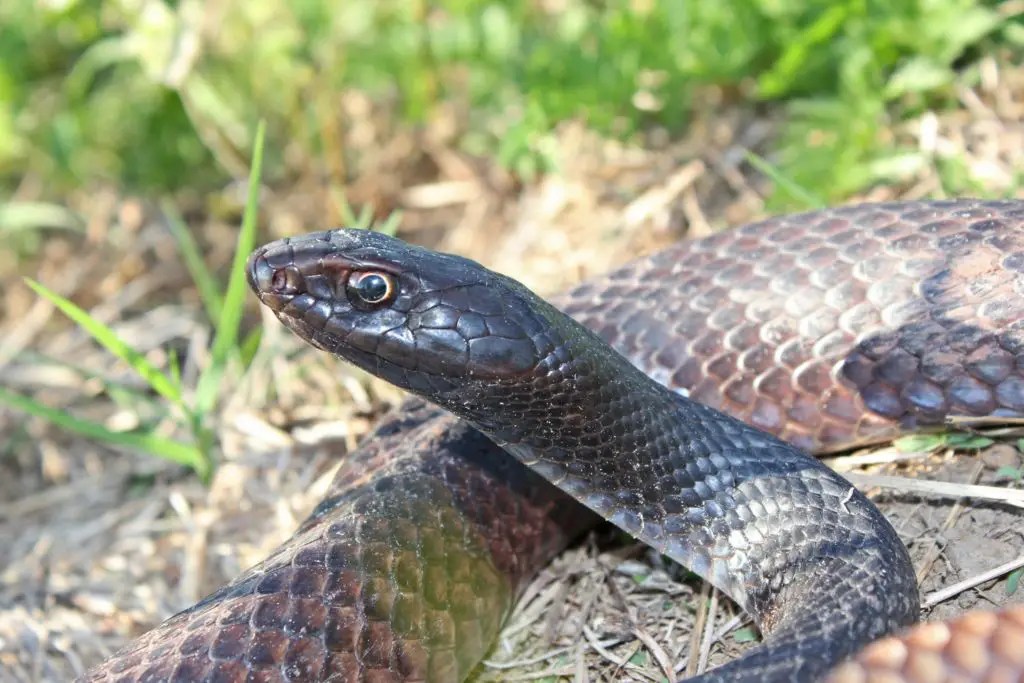Where should I put my snake enclosure? This is a great topic to learn about because a snake tank’s location is almost important as what you put in it.
Last updated on February 1st, 2023 at 09:38 am
Where you put your snake’s enclosure depends on a few different things. Temperature, sunlight, and potential hazards must be analysed. You also need to consider how much space your pet needs. In this article, we’ll go through these factors so that you can choose the best location for your snake.
Can I put my snake cage on the floor?
You can put a snake enclosure on the floor if the conditions are right. To make this decision, there’s two aspects you need to consider. First is that a lot of snakes get very upset by heavy vibrations, and your floor is basically a conductor for vibrations.
They can be from people walking, vacuuming or traffic. Raising an enclosure on a shelf, table, or stand means it receives less intense vibrations because the stand has a dampening effect.
Second is temperature. In some rooms of your house the floor will be much cooler than other heights – especially at ground level. This is because heat naturally rises and some building materials like concrete just seem to suck the heat right out of a room. Funnily enough, this is essentially what happens inside large enclosures that only have a heat lamp to keep them warm: the top heats up and the bottom stays cold.
So yes, you can put your snake cage on the floor, but only in a room where the insulation is good, and vibrations are low. Rooms above ground level or with carpet are always better.

Can you put a snake cage by a window?
You cannot put a snake cage by a window. For starters, if direct sunlight comes in through the window it will overheat and possibly kill your snake. Likewise, if the window lets out a lot of heat, it could make your snake too cold, or force its heating appliance to work too hard and use a lot more electricity.
I recommend placing your snake’s enclosure in a part of the room where you are certain direct sunlight cannot fall on it, and where the temperature is as stable as possible.
Do snakes need sunlight?
All diurnal reptiles need sunlight (UVB and UVA). They use it to synthesise vitamin D3 and metabolise calcium. No UV light = metabolic bone disease. It really is that simple. The only reason nocturnal snakes like Milk Snakes, Rosy Boas and Ball Pythons don’t need it is because they have adapted to take vitamin D from their prey instead.
Species like Rough Green Snakes, for example, are very much diurnal and the use of UV light forms an integral part of their biology. The problem is sunlight from a window is hard to regulate. It can get too hot or change according to the season. If you keep a diurnal species that doesn’t need to brumate, it could be negatively affected by decreasing daylight hours in late summer or autumn.
If your snake species is diurnal, and likes to bask, you must provide it with artificial sunlight. Do this by providing a UV light inside the enclosure for optimum health. I also recommend putting it on a timer (12 hours on/12 hours off) and placing the enclosure away from a window. In a captive environment, it should be you, the keeper, who regulates UV exposure.
Choosing where to put your snake’s enclosure based on how often they will be disturbed
As I mentioned earlier, many snake species hate heavy vibrations or loud noises. What this really boils down to is that they hate disturbance. As a herpetologist, I’m familiar with this concept because I’ve seen how negatively human disturbance affects wild species.
Here in the UK, for example, government agencies have flooded Adder (Vipera berus) habitat with woodland cattle and cycle paths. The result is that our only venomous snake is now declining across the country. From my time surveying them, I can say that disturbance made them less likely to bask, feed, and breed.
Captive snakes are no different really. They tolerate us to a certain extent, but still need their peace and quiet to function. Too much activity around their enclosure will result in them suffering from stress and either becoming aggressive or anorexic, depending on the species.
When choosing which room to put your snake’s enclosure in, always pick the quietest room that gets used the least.

Choosing the best type of enclosure for your snake species
So far, we have discussed where to put your snake’s enclosure, which is extremely important. Notwithstanding, enclosure placement is only half the battle. You also need to choose the type of enclosure that suits your pet snake species. If you don’t, it won’t matter where you put it – the snake won’t do well!
There are many things to consider when choosing the enclosure type. Ball Pythons, for example, are shy and spend most of their time hiding; that’s why they do well in tubs. I wouldn’t dream of keeping a large, active species like a Cribo (Drymarchon sp.) or Racer (Coluber sp.) in a tub, however. Likewise, semi-aquatic and aquatic species need very specific enclosures.
Take a look at the table below for some examples of enclosure suitability by snake species. When it comes to bioactive enclosures, these are appropriate for any small species that isn’t likely to produce large messes or destroy plants. Any of the enclosures listed can be converted to bioactive.
When you look at the table, you’ll quickly realise why I get frustrated that some herpetoculturists keep every species they own in tubs – it’s just not appropriate! Tubs are fantastic for Ball Pythons but cruel for some other species.
Table: best type of enclosure for your snake species
| Type of enclosure | Species they are appropriate for |
| Terrarium/Vivarium (PVC or other) | – Terrestrial snakes that require moderate to low humidity but a lot of space. – Racers, Cribos, Cobras, some Rat Snakes – large Pythons, large Boas, Anacondas. – very large adult Bull or Gopher snakes – adult False Water Cobras |
| Plastic tubs | – Ball Pythons – young and medium sized Rainbow boas – terrestrial or burrowing species that require moderate to high humidity – small colubrids, including Milk, King and Corn Snakes – some smaller Rat Snake species – Western Hognose snakes if adequate ventilation is provided! |
| Arboreal PVC enclosures | – Amazon Tree Boas – Emerald Tree Boas – Mangrove Snakes – Green Tree Pythons – Rough Green Snakes – Everglades Rat Snakes |
| Paludariums | – Water Snakes (Natrix and Nerodia spp.) – some Garter Snakes and Ribbon Snakes – Tentacled Snakes – Keelbacks – Enhydris water snakes |
| Terrestrial mesh top glass tanks | – small desert species – Rosy Boas – Sand Boas – Western Hognose Snakes |
| Arboreal mesh top glass tanks | – Rough Green Snakes – Some small Pitvipers – other small arboreal species The mesh top may need to be partially covered to increase humidity! |

Video: paludarium for water snakes
Making sure there aren’t any drafts or excessive heat
When choosing where to put your snake’s enclosure, do some testing first. Are there any drafts in the room? Is there a radiator? Either of these things could affect the temperature in your pet’s enclosure and make its heating appliance less functional.
Generally, if you put a reptile enclosure in a spot that gets too cold, it increases the strain on its heating appliance and one of three things will happen:
- the enclosure will get too cold, resulting in a sick snake
- the heating appliance will overheat. This could result in blowing a heat bulb or starting a fire. Thermostats do help keep things safe, but not if the probe is placed too far away from the heat source. This is an important point to remember!
- increased electricity consumption
Conversely, if you put the enclosure in a spot that gets too warm, the heating appliance will be fine, but the snake will eventually get sick or stop eating from overheating. This is why my enclosures never go next to a radiator.

What should you not put in a snake enclosure?
One thing that is true for all species is that you should never put anything in their enclosure that could harm them. Sharp decorations, rocks or branches should be sanded or rounded off with a Dremel tool before adding them. Duct tape and other sticky tapes should never be used inside the tank, nor should toxic glue or mould-resistant silicone.
As far as substrate goes, sand is best avoided for most species, unless they are desert specialists. Pine and cedar should never be put in a snake’s enclosure due to their toxicity to ophidians.
What is toxic to snakes?
Another factor that is regularly overlooked is the potential for exposure to toxic substances. As animals go, snakes are fairly sensitive to irritants. If bleach-based cleaning products, polishes or insecticides are kept in a room, then you should not put your snake’s enclosure there!
Check out the table below for substances that are toxic to snakes. Typical signs of intoxication include a “coughing” noise, diarrhoea, vomitting/ regurgitation, drooling and chin rubbing.
Table: toxic compounds to snakes/irritants to snakes
| Toxic to snakes | Irritant to snakes |
| Bleach | Tobacco |
| Insecticides | Alchohol |
| Some detergents | Some detergents |
| Cedar resin | Some soaps |
| Pine resin (probably) | Some artifical fragrances, including on paper towels |
Do snakes need a lot of space?
Despite all sharing the same basic morphology, snakes are in fact a diverse group of animals. Their sizes, habits, and activity rhythms vary immensely from species to species, and so do their space requirements. Generally speaking, species that are shy, ambush predators do well in enclosures that are roughly equal to 60 – 100% of their body length. For Ball Pythons, this means most adults are perfectly happy in a 3ft (1m) long enclosure.
More active species, like the Black Racer (Coluber constrictor) or the Eastern Coachwhip (Masticophis flagellum) would be absolutely miserable in the same enclosure. They are active predators that forage and hunt by sight rather than lying in wait. For these species, a lot of room is required. A 4ft (1.2m) long Racer would need a 6 to 8 long enclosure, with some height for climbing.
When deciding how much space your snake needs, it has to be based on the species. As you can see from these examples, there’s no one-size-fits-all when it comes to animals.

Should I cover my snake’s terrarium?
Everything I describe in these articles is what you should do in an ideal world. But I also know you have to compromise sometimes. Right now, I’m writing in the same room as my snakes. I would love for them to have their own room that gives them peace and quiet most of the time – but not everyone has a spare room available just for their pets!
If you can’t house your snake in a very quiet, or unused room, the best compromise is to cover at least three sides of its enclosure. This will make it feel less exposed and reduce stress. All of my enclosures are either covered on three sides or in a rack system.

How do you blackout the sides of a terrarium?
Covering the back and sides of a terrarium can be done in several ways. The cheapest and easiest is to tape brown paper or something similar to the outside. This might not look great, but it works. Another option is to tape a landscape background to the outside of the enclosure. This will also add to the aesthetics of the cage.
Last, but not least, you can build the enclosure into a piece of furniture, like in the photo above.

